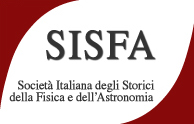Speaker
Description
The interest in physical properties of glass is a constant in scientific literature and when the United Nations General Assembly declared 2022 to be the International Year of Glass, a number of researches gained new impetus. Material scientists paid increasing attention to some curious glass behaviors, known for centuries and apparently of historical interest, being now possible to obtain useful information for studying non-equilibrium phenomena thanks to modern techniques. An example is that of the so-called ' Dutch or Batavian tears' or drops of Prince Rupert (PRD), known since the seventeenth century, resistant to hammer blows but which are pulverized by breaking the tail. Other curiosities of the same period have much in common with the "drops", such as for example the ampoules (also called philosophical vials or bottles) of Bologna, less known than the PRD but, according to an 1825 city guide, "well known to physicists ”. Apparently unbreakable if struck from the outside, they shatter by introducing a grain of flint inside. Starting from their discovery, perhaps fortuitous, for more than two centuries they were the subject of academic debates, encyclopaedia articles, learned exchanges of letters, and magic tricks (the bottles of the Devil) to arrive at today's educational laboratories. The PRD have been discussed in a recent paper, but the 'Bologna Bottles', related history and the theories explaining their mechanical behavior will be exposed in the course of the present communication, together with some unexpected comparisons with current events.

